Aotearoa / New Zealand: a unique beginning and human settlement
Millions of years ago Zealandia broke away from the super-continent Gondwana. It became an isolated environment where unique species of flora and fauna evolved and thrived. Human settlement had devastating consequences.
The origins of our unique ecology
Eighty five million years ago tectonic activity started to break up the super-continent Gondwana. This process created a smaller continent, known as Zealandia. Eventually this formed the land of Aotearoa / New Zealand.
The world’s biota was very different at the time Zealandia broke away from Gondwana. The continent carried the ancestors of today's plants and animals, which then continued to evolve here in isolation.
Endemic species have ancient lineages back to this time. These species include the kauri and podocarps like rimu and tōtara, the southern beeches, wētāpunga and tuatara.
A changing landmass
Zealandia was large at the time of separation. During the Oligocene period it became progressively smaller.
Following the Oligocene period, volcanic activity and tectonic movements formed and lifted new land out of the sea.
Evolution in isolation
As more land appeared, new species of plants and animals arrived (those that were capable of dispersing across the widening Tasman Sea).
Separated from a world dominated by browsing and predatory mammals, unique species evolved. Numerous species of flightless and ground-dwelling birds evolved. These included nine species of moa that ranged in size from the turkey-sized small bush moa to the 250 kg giant moa. The largest known raptor, Haast’s eagle, preyed on moa and other large ground birds.
The forest floor was home to many ground-foraging species. These included:
- bats which scuttled around on all fours
- giant wētā that filled the niche that small rodents hold in other parts of the world
- many species of lizards and several species of primitive frogs.
The coast and marine environment supported large populations of seabirds, seals and whales.
A diverse flora, with many endemic plants, evolved to occupy Aotearoa’s wide range of environments. These included the sea coast and wetlands through to subtropical, temperate and alpine habitats.
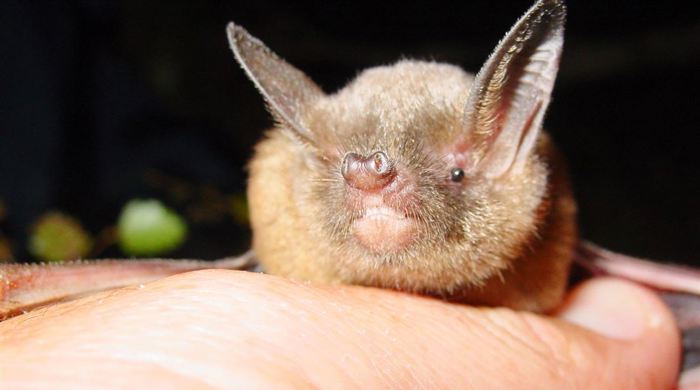
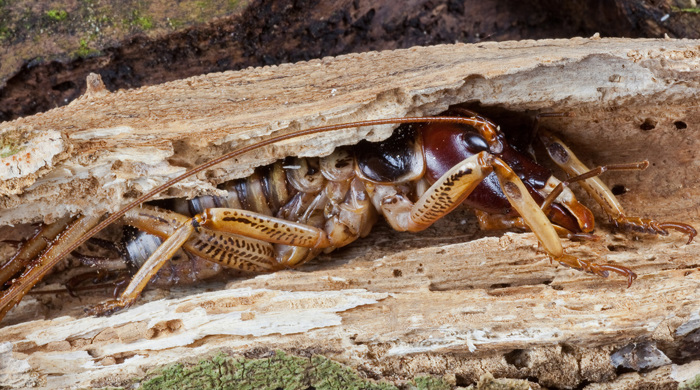
Māori arrival and settlement
Archaeological evidence supports the discovery of Aotearoa by Māori as early as 1280. The the main wave of Māori settlers arriving from Polynesia between AD 1320 and 1350. They brought a way of life, consisting of protocols, customs and language, to a land previously uninhabited by humans.
Māori introduced many exotic plant crops and animals including the first terrestrial predatory mammals, the kiore and kuri.
Within a few hundred years, sustained harvesting resulted in the extinction of at least 28 known bird species including:
- all nine species of moa
- most of the large meaty birds like the New Zealand goose and adzebills
- North Island takahe
- several species of penguin.
With the progressive extinction of many of the large birds through overharvesting, Māori increasingly concentrated on the marine and coastal environments for protein. Marine mammals like the New Zealand and Chatham Island sea lion were once abundant along the coast. They were harvested them to extinction on the mainland by 1500. Harvesting also dramatically reduced the geographical range of the oioi. The numbers of seabirds that nested in colonies also declined sharply near populated coastal areas.
Populations of other smaller, flightless and poor flying species were also heavily targeted by Maori for food and/or became extinct or declined significantly due to predation by kiore. The introduction of kiore also resulted in the:
- complete disappearance of tuatara from the mainland
- extinction of at least three frogs
- devastation of invertebrate ecology.
The loss of mature forest
During this same period, fire removed large areas of the original forest cover, especially on the drier eastern sides of the two main islands. Some areas were accidentally burned. Other fires were intentional to clear land for cultivation and villages, and make it easier to hunt for food like burrowing seabirds.
Cleared areas, if not repeatedly burned, regenerated into bracken and scrublands. This provided habitat for some birds, reptiles and invertebrates. However, habitat for species that prefer mature forest was significantly reduced.
Expanding matauranga Māori
Well-known whakataukī show the growing awareness amongst Māori of the ecological and social implications of species extinction. Proverbs like Mate ā moa and Kua ngaro i te ngaro o te moa date between 1500-1650.
Over time, matauranga Māori of this new environment deepened. For example, Māori used rāhui to allow stocks of various species to recover.
Māori have formed a deep understanding of nature over hundreds of years of occupation. Today we look to them to help guide the protection of species and restoration of ecosystems in Aotearoa.
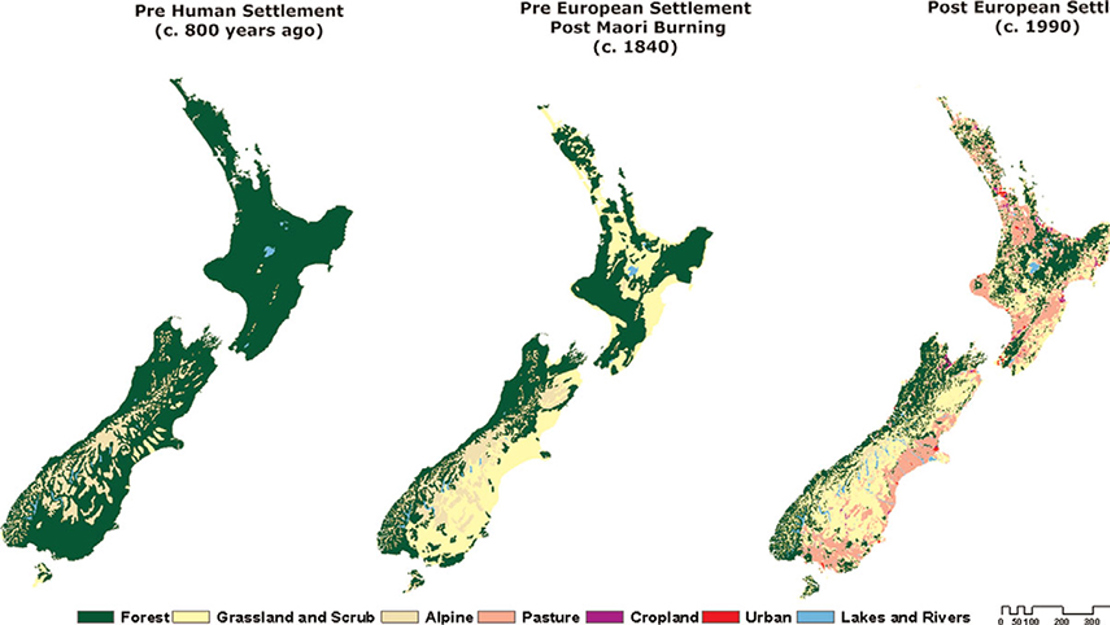
Pakeha arrival and settlement
The arrival of Pakeha in the late 18th century accelerated environmental change and another cascade of extinctions.
Introduction of new predators
When Cook arrived in Aotearoa, his ships brought Norway rats. Cats and mice established soon after, arriving with the earliest European settlers during the sealing and whaling era. Ship rats were later introduced around 1850 and are now the most common rat species in New Zealand.
These predatory mammals quickly spread and caused many species, which had survived the arrival of Māori, to go extinct. This included the introduced kiore which declined due to competition and predation by European mice and rats. Today in Aotearoa, kiore only live on a few offshore islands and in some remote areas of the South Island.
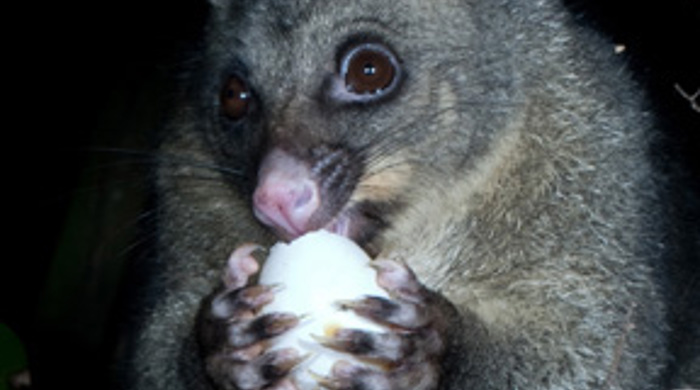
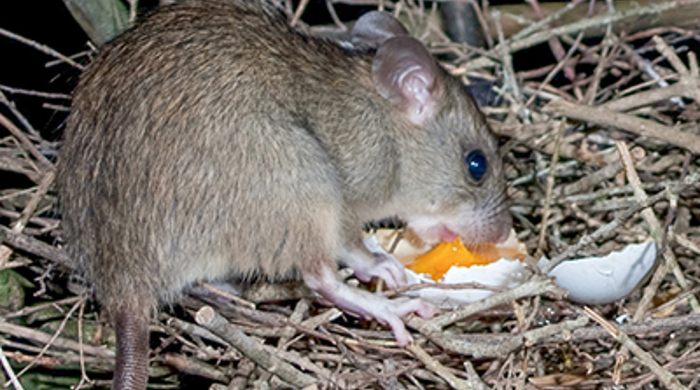
Rapid changes in land use
Early European settlers quickly overexploited New Zealand's natural resources, such as seals, whales and timber. In the early 1800s, they discovered kauri wood was perfect for ship spars. Its beauty and durability then made it highly sought after for buildings.
In the 19th century, much of the northern kauri forests was milled or lost to wildfires. Additionally, miners altered the landscape in search of gold, particularly in the latter half of the century.
As more immigrants arrived, more forests were cleared and wetlands drained for farming. This 'breaking in' process turned natural areas - wetlands, tussock grasslands, scrub, and forests - into pasture. As a result, natural vegetation cover dropped to about a quarter of its original size.
In 1840, about 60 per cent of the land was indigenous forest. Now, only 26 per cent remains. Pasture and horticulture cover 45 per cent. Exotic plantations make up 6 per cent. Native scrub is less than 7 per cent. Wetlands have dropped to 10 per cent of their original size.
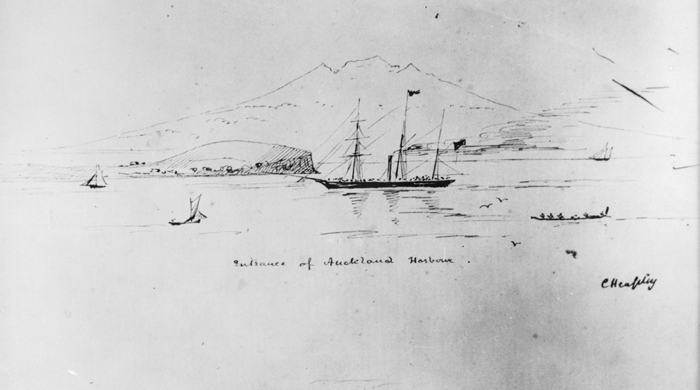
Cultural acclimatisation
In addition to farm livestock, European settlers introduced many exotic plants and animals, for sentimental and practical reasons.
From 1830, rabbits were released for food and fur but soon became pests. They competed with livestock for pasture and damaged soils with their burrowing.
In the same way, brushtail possums were brought from south-eastern Australia and Tasmania in the 1850s to start a fur industry. Early protection helped them thrive and they too soon became pests. They consumed pasture, destroyed native forests and threatened vulnerable wildlife.
In the 1880s, three mustelid species - stoats, ferrets, and weasels - were introduced to control rabbit populations. Experts had predicted their limited effect on rabbits and warned about the devastating impact on native wildlife. Despite this, the introduction of hares, hedgehogs and several wallaby species followed in the late 19th century. These, too, all became pest species.
Game species like deer, chamois, and Himalayan thar were introduced. Goats and pigs brought here quickly became feral and herds of wild horses established in some areas. These grazing and browsing mammals have greatly altered native forests, grasslands and alpine ecosystems, which had evolved for millennia without herbivores.
Trout, salmon, and other exotic fish were introduced to rivers and lakes for recreation. This reduced native fish species through predation and competition.
Hundreds of species of exotic herbs, shrubs and trees from various parts of the world were introduced to farms, towns and gardens. About 40 species of mainly European birds were released into the wild. Some of these are now among the most abundant bird species in the country, for example the mallard, European blackbird, chaffinch and starling.
All these introductions increased our country’s likeness to Britain and Europe. They have also changed Aotearoa’s ecology permanently and set it on a completely different evolutionary path.



